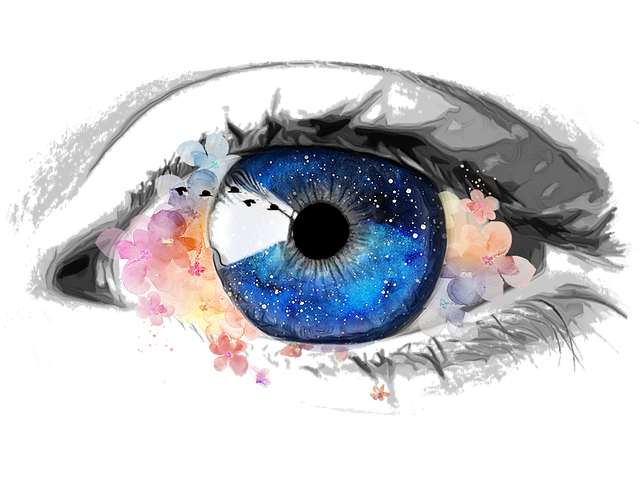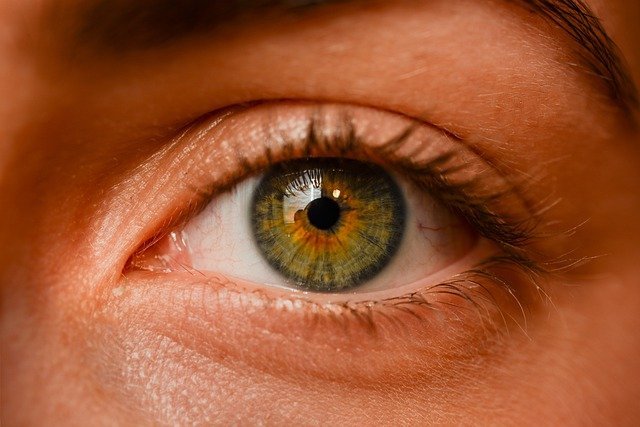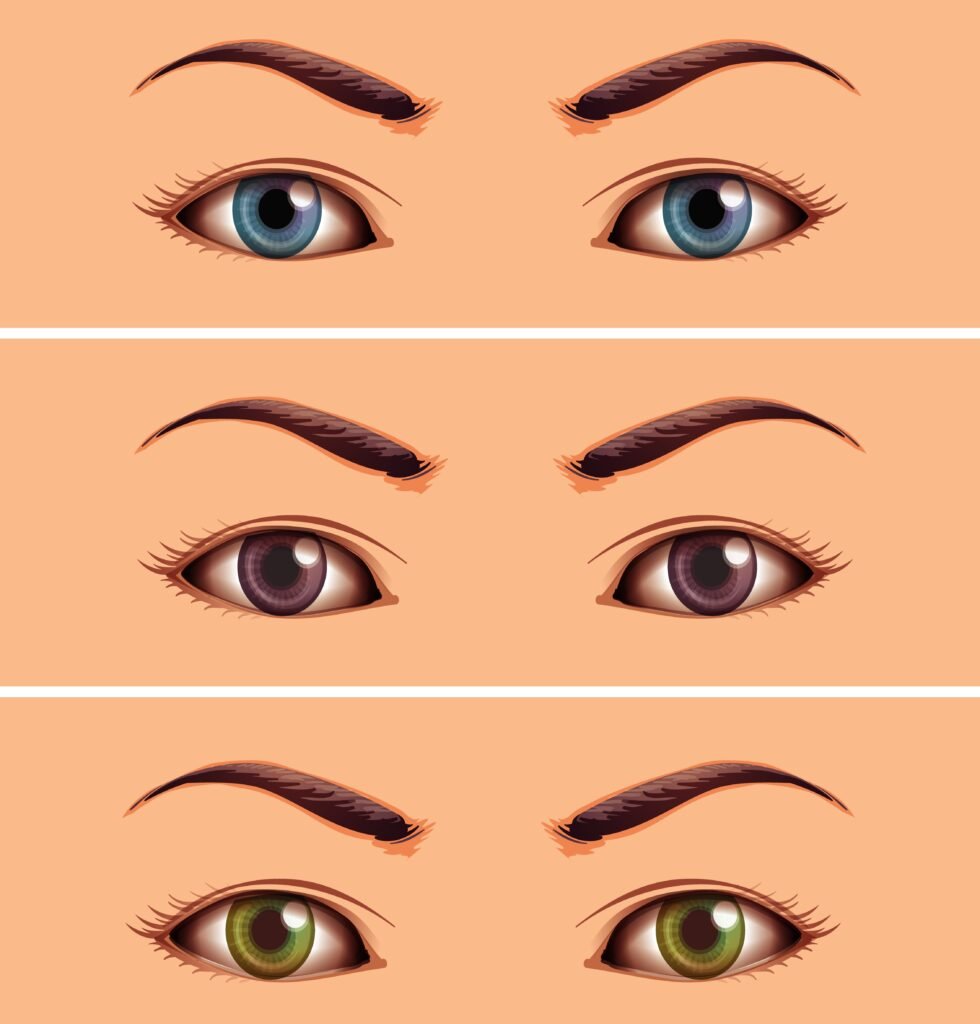The Science Behind Eye Color.
The not common misconception, as soon as believed as reality with the aid of using scientists, is that eye color changes into decided with the aid of using one gene that is expressed as brown (a dominant gene) or blue (a recessive gene). But we now recognize it’s miles tons extra complex than this.
A person’s eye color is truly an expression of dozens of genes (over 60, consistent with one study). Even amongst human beings with the “same” eye color, including blue, those genes can create diffused variations that imply your eye color is as specific as your fingerprints.

The real pigment that offers attention to color is known as melanin, which darkens your eye color. The gene groupings that reason your eye to have extra melanin are the maximum not common, that’s why brown is the maximum, not common eye color. Brown changed into additionally the primary eye color in human beings, with the relaxation coming later as genetic mutations
Eye color can completely alternate over the direction of one’s life, though. For 10 to fifteen percent of the Caucasian population, iris color modifications with age. For instance, hazel eyes can get dark with age. And if this sort of alternate in eye color occurs rapidly and dramatically, like from brown to inexperienced or from blue to brown, this can be a signal of a situation creating a doctor’s appointment urgently required. Eye color modifications may be a caution signal of positive diseases, which includes Fuch’s heterochromic iridocyclitis, Horner’s syndrome, or pigmentary glaucoma.
What gives eyes their color?
The iris color is set by the number of melanin pigmentation. A lot of pigment there’s, the darker the iris can be. Blue, gray, and inexperienced eyes are lighter as a result of there being less melanin within the iris.
By far, the maximum common eye color withinside the world is brown, with over 55% of the populace falling into this category. Depending on wherein someone is born, eye color demographics can range wildly. For instance, almost all folks of African and Asian ancestry have brown eyes. It’s believed as much as 10,000 years ago, all people had brown eyes only. Then a mutation became off the pigmentation at the front of the iris. Hazel eyes are much like brown eyes, the difference being those are lighter. A defining trait of hazel eyes is their multi-colored look which can range from copper to inexperienced relying on the lighting. Hazel eyes have better attention to melanin across the iris’ border. Estimates advise five to eight percent of the globe’s populace is hazle-eyed (each inexperienced and brown).

The subsequent maximum, not common eye colors are blue, gray, and inexperienced on this order. It’s generally quoted that the handiest 2% of the world’s populace has inexperienced eyes. There also are so-referred to as ‘amber’ eyes. which might be even rarer than inexperienced eyes. Amber eyes or ‘wolf eyes’ as they’re every so often referred to as are absolutely strong and feature a robust yellowish, golden, or russet and coppery tint. They also can incorporate a small quantity of gold-ish gray.
It’s now no longer clean how amber eyes shape however a few advocate it’s because of the elevated presence of a pigment referred to as lipochrome (additionally referred to as pheomelanin). Besides making eyes colored, the pigment melanin additionally serves the essential characteristic of protecting them from the sun’s UV rays. It follows that darker eyes, which have the maximum melanin, are much less touchy to the sun’s dangerous rays than lighter eyes like blue.
When we come into this world, our eyes are blue or nearly colorless. This is proper for all babies, irrespective of their ancestry. In time, the awareness of melanin will increase, and via way of means of age three, the eyes can have darkened to their proper, very last resting color. Or nearly very last. Much later in life, our eyes can alternate colors as soon as more. Disease and trauma also can inflict modifications in iris coloring. More on that later.
How eye color is inherited?
If each mother and father have blue eyes, there’s an awesome threat their offspring has blue eyes as well. It follows that iris coloring is ruled via way of means of genetics. However, a toddler’s eye color doesn’t pop out as a mix of the discern’s eye, as in case you blended paint. Up till now no longer too lengthy ago, even docs used to assume that eye color became decided via way of means of a single gene and accompanied an easy inheritance sample wherein brown eyes have been dominant to blue eyes. The question became that if mother and father each had blue eyes, they couldn’t make a toddler with brown eyes. Imagine what kind of issues this prompted again at home. Alas, that is wrong.
Instead, many diverse opportunities exist because every discerns has pairs of genes on every chromosome. In different words, eye color is a polygenic trait, which means it’s far decided via way of means of a couple of genes.
The eye color genes.

Among the genes that have an effect on eye color, OCA2 and HERC2 stand out. Both of those genes are located withinside the human chromosome 15. The OCA2 gene produces a molecular membrane transporter of tyrosine, a precursor of melanin. Mutations in OCA2 bring about oculocutaneous albinism, a situation related to imaginative and prescient issues including decreased sharpness and improved sensitivity to light. In the European population, a not common polymorphism in the HERC2 gene is answerable for the blue eye phenotype. A character who has copies of the C allele at HERC2 rs1293832 will probably have blue eyes even as homozygous TT predicts probable brown eyes.
Several different genes play smaller roles in figuring out the eye under. Some of those genes also are concerned with pores and skin and hair coloring. Genes with pronounced roles in the eye include ASIP, IRF4, SLC24A4, SLC24A5, SLC45A2, TPCN2, TYR, and TYRP1. The results of those genes probably integrate with the ones of OCA2 and HERC2 to provide a continuum of eye colorations in exclusive people.
Nowadays, many DNA exams are dependable and sufficient to decide a character’s eye color from a hair pattern alone, a few with over 90�curacies. Such analyses at the moment are turning into increasingly more not common withinside the area of forensic investigations.
How does eye color change during a lifetime?
The iris, the colored little bit of the eyes, is basically a muscle. Its position is to manipulate student length so we will see higher below various light conditions. When there’s dim light, the students enlarge and, conversely, grow smaller in shiny lights. Pupils additionally alternate lengths relying on centered objects. For instance, analyzing a book calls for your students to decrease as a way to consciousness the close to objects, i.e. phrases inked on the paper.
When the student’s length modifications, the melanin pigment is compressed or unfolds apart, barely converting the attention color. The impact is minuscule however it’s there.
The iris is a muscle that expands and contracts to manipulate student length. The student enlarges in dimmer lights and grows smaller in brighter lights. The student additionally shrinks while your consciousness on close to objects, which includes a book you’re analyzing.
When the student length modifications, the pigments withinside the iris can emerge as compressed or unfold apart, converting the attention color a bit. Some have advised that temper also can alternate eye color. While it’s authentic positive feelings like anger or love can impact student length, the iris doesn’t actually alternate color. When a person’s eyes have red, dilated blood vessels from anger, his eyes may also appear greener due to the contrast, that’s all.
Do Different Eye Colors Have Different Benefits?

Because of the occasionally simplified manner standards like genetics and Darwinism are taught, we’d moderately anticipate there may be a survival-primarily based totally motive numerous eye colors advanced and survived in numerous human populations. While studies are ongoing, this doesn’t appear to be the case.
Of all eye colors, brown appears to be the best one that might be called “advantageous” from a survival perspective. While greater studies are needed, darker irises are connected to some of the fitness blessings, inclusive of these:
- Reduced chance of macular degeneration
- Lower cancer chance
- Lighter eyes might also additionally have a few benefits too, however, they’re additionally connected to positive fitness and dependency risks. People with lighter eyes might also additionally have the following:
- A decreased risk of growing vitiligo
- A better chance of abusing alcohol
- Greater mild sensitivity, particularly amongst human beings with albinism.
Notably, the capacity variations in fitness effects among exceptional eye colors are nearly truly slight. The motive exceptional eye colors have controlled to live to tell the tale is essentially due to the fact they didn’t substantially affect the survivability of the early human beings who advanced them.
Most capacity blessings that would come from eye color are social. Some human beings locate exceptional eye colors with greater appeal or interest. Different eye colors additionally make human beings greater diverse, that’s arguably superb in that it doesn’t substantially affect fitness.
The Most Common Eye Colors.
Brown is the maximum common eye color for each international and withinside the United States, with greater than 1/2 of human beings withinside the globe having brown eyes. Because of wherein later genetic mutations originated, lighter eye colorations nearly solely exist amongst populations with European ancestry.
Brown eyed-genes also are normally dominant, which means someone with brown eyes who produces a baby normally has an extra than even hazard of manufacturing a baby who additionally has brown eyes.
The 2d maximum common eye color is blue, with an estimated 17 percent of the globe’s population having blue eyes. Blue-eyed genes are normally recessive.
It became as soon as believed blue-eyed human beings couldn’t produce a brown-eyed baby, which means it became formerly concept it is probably a signal of infidelity if a baby attributed to any such couple had brown eyes. This isn’t always valid, and the fact is greater complicated. It isn’t common for 2 blue-eyed parents to supply a brown-eyed baby, however, it’s far possible.
The Rarest Eye Colors.

When discussing uncommon eye colorings, it’s miles not common for human beings to carry up different colorings they’re probable to have nevertheless visible withinside the preferred populace in their network or as a minimum on television. Eye colorings including inexperienced and hazel are uncommon however they aren’t virtually the rarest.
The rarest eye colorings are the end result of extraordinarily unusual genetic mutations. For example, a mutation withinside the FOXC2 gene is a concept to be the motive for a few human beings being born with violet eyes.
Another uncommon eye color, which is probably known as red or red, is the end result of albinism. A man or woman born with albinism has nearly no melanin in their pores and skin, hair, and irises. In addition to giving someone evidently very faded pores and skin and vivid blonde or white hair, this additionally method their eyes have an uncommon reddish or pinkish hue, even though this sadly has the aspect impact of creating them very touchy to sunlight.
